Mumbai: The haves and the have-nots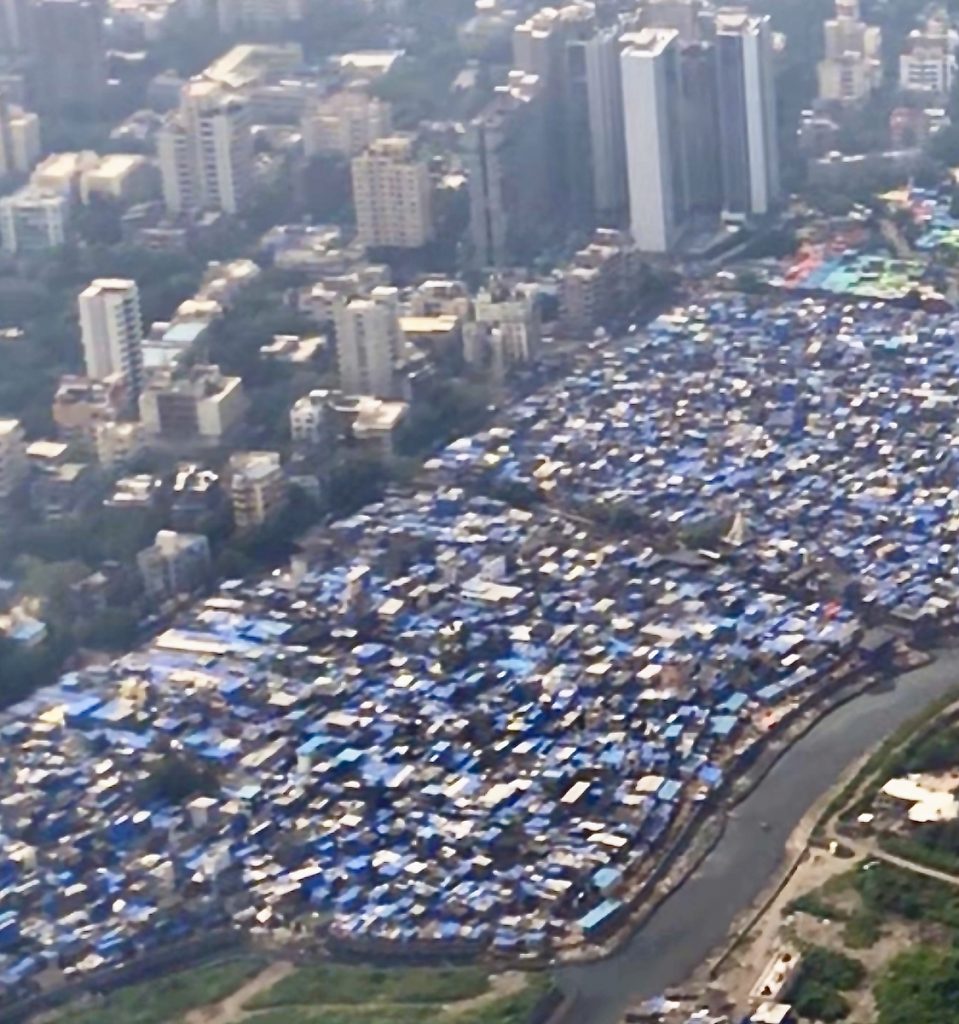
Dharavi Mumbai slum?
When leaving Mumbai, I took a video during take-off, and the astounding sight emerged of a vast ‘slum’. Families living alongside the major international airport in the prosperous part of the city came into view as we taxied down the runway. The sight appeared shocking to my unaccustomed, westernised eye. I had read about the Dharavi Mumbai slum. One of the biggest in the world, where people can go on a ‘tour’ of the area. I presumed it to be the only one.
I have to say first, I find the word slum derogatory. Shadowy colonial-era ideas and sensibilities of a certain class would like Dharavi and co. to persist in the minds of others as the slums they once were. And, a million residents of Dharavi occupying an area of 1 square mile, earning on average only 1 US dollar a day for themselves, illustrate their point well. Ohhh, was it not for the fact these slums occupy some of the most expensive land in Mumbai – rich people want it!
However, the people of Dharavi would disagree, and the estimated GDP of 1. 5 billion dollars a year they generate supports their argument that they are, in fact, an industrious city within a city. Packed with business, clinics, retail shops, factories, schools and hospitals, Dharavi has a vast and growing economy.
In Dharavi: The City Within, Campana introduces the word citysystem coined by Jeb Brugmann, one of the Dharavi residents interviewed for his book – so I am going to go with that, Dharavi, a city within a city – a citysystem.
McLean’s on tour: it never goes well
(You can read in our About Us page, we don’t do conventional, well, anything.)
We organized a tour through our Mumbai hotel when we returned. Remembering, of course, this is a McLean tour, things didn’t start well. (Read about the Ranthambore Tigers: They don’t know it’s Sunday debacle here). However, as the day unfolded, through what appeared a series of, um, misunderstandings, all concerned learned lessons.
Morning began with Iain assembling two large cameras, and I mean huge, to take photographs of Dharavi. To clarify, I reminded him, we discussed, we were told not to bring cameras. We are entering people’s homes. It’s an invasion of privacy, etc etc. Anyhoo, unbeknown to me, Iain since decided this rule did not apply to him – sigh. So off we went down the great glass elevator, into the grand marble hall of our Mumbai hotel, to meet our tour guide.
Three worlds colliding
A small Indian woman must have spotted our demise, I mean descent, and advanced with something of a rather angry face.
“No, no, no cameras, not allowed, not allowed, put away.”
Iain doesn’t listen to no and launched into an inexplicable rage. I am Iain; I am a photographer. This suggestion is an outrage, bla bla – embarrassing outburst. Ending in
“Right, I am not coming” and off he fled, back up the glass elevator, huffing and puffing in full view.
“Ummm,” I said to the bemused woman, “he will return in a minute.”
And so we waited.
Be careful who you preach to
Meanwhile, said guide talked to the concierge of the hotel who witnessed all of this. Another angry exchange ensued. He started waving his arms that, in fact, if we wanted to take a camera, everything would be fine. No, she insisted the people of Dharavi don’t like cameras, photographs are an intrusion of privacy etc. etc. They will throw stones!
“I – am from Dharavi,” he announced, “I – say yes.”
Well… her ghast became flabbered. She made a hasty retreat behind me. She could not comprehend someone from Dharavi was working in a top-class Mumbai hotel, and as Head Concierge.
When you meet your match
I considered this a curious situation. The guide and Iain are both stubborn and mis-opinionated. The problem we have here, Toto, is that these two have met their match. Furthermore, it was not lost on me that we were indeed having this dispute from within this grand hotel and maybe if someone came parading through my home – I too may actually have a desire to throw stones at them. Anyway, at that, Iain returned – with one camera in hand. Sigh, sigh.
The Dharavi Mumbai slum tour begins
So, off we trecked, the guide, me, the husband and – the camera.
“Now,” she shouts, “this is not slum, dog, millionaire,” “people come expecting Slumdog Millionaire, this is not it,” “these people are working and making a living and are happy” “this is not your definition of poor.”
Well, excuuuuse me. What do you assume my definition of poor is? What is your interpretation of poor? Why, I now considered, are you conducting this tour, anyway? A well to do local, and not someone from Dharavi itself. Maybe we should have checked first. She was the one, it appeared, who held a fixed and outdated judgement of Dharavi. Not a good beginning.
Dharavi
If I begin at the end, I will give you a better picture. About 2 hours into the tour, I said to Iain I wanted to leave, not because I didn’t find the place fascinating as I did, but because of an intense pain inside my nose. My head hurt, my eyes stung. I have asthma, so decided I better keep my mouth shut and breathe through my nose. I had no medical basis for this, so could be, in fact, I had made the situation worse. Anyway, after about 2 1/2 hours, we left, and as we returned to the hotel, my nose started bleeding, and the pain in my head became unbearable.
No health or safety here
The breaking point came when walking through the ‘industrial’ area when we approached yet another ‘factory’. Metal fillings flew out in the air, flames burst out from the makeshift machinery. I slipped on the planks of wood across the stones and put my hand out, almost grabbing the live wires dangling from above, and as I stumbled around spotted the ‘paint pot recycling factory’. The fumes engulfed the air as they put the used pots of paint on flames to burn out the extra paint and ‘clean’ the containers.
At that moment, I decided I needed to leave. As interesting as the tour was, I did not wish to die in a ball of flames in a Mumbai slum.
Dharavi Mumbai slum or enterprise?
Now then, imagine a rabbit warren of tiny factories branching off of each other, crammed with people working away. Up, down, left, right, sideways. When I say factory, imagine a small room, no doors, no windows, no daylight. When I say room, think, more outhouse, no proper flooring, makeshift walls, a ceiling of sorts. And hot, turn up the heat. Filled with men, no shoes, no shirts, working on their designated task, the smell of toil and sweat in what seemed impossible conditions. The primary ‘industry’ being recycling.
It transpired, photographing the area was not possible, not because the people objected – because it was too dark! I confess I did snigger to myself; they were both wrong.
Making nothing into something
Our guide portrayed this Dharavi Mumbai slum as a glorious enterprise. For sure, the people were making something out of nothing, literally. Every, everything you can imagine; used toilet paper, air conditioning units, plastic bottles, cardboard, shoes, computers, anything, is recycled. We even passed a giant Johnny Walker whisky statue. What on earth could they do with that? All the items got ground down, dismantled, chopped up, turned into bits to turn them into something new.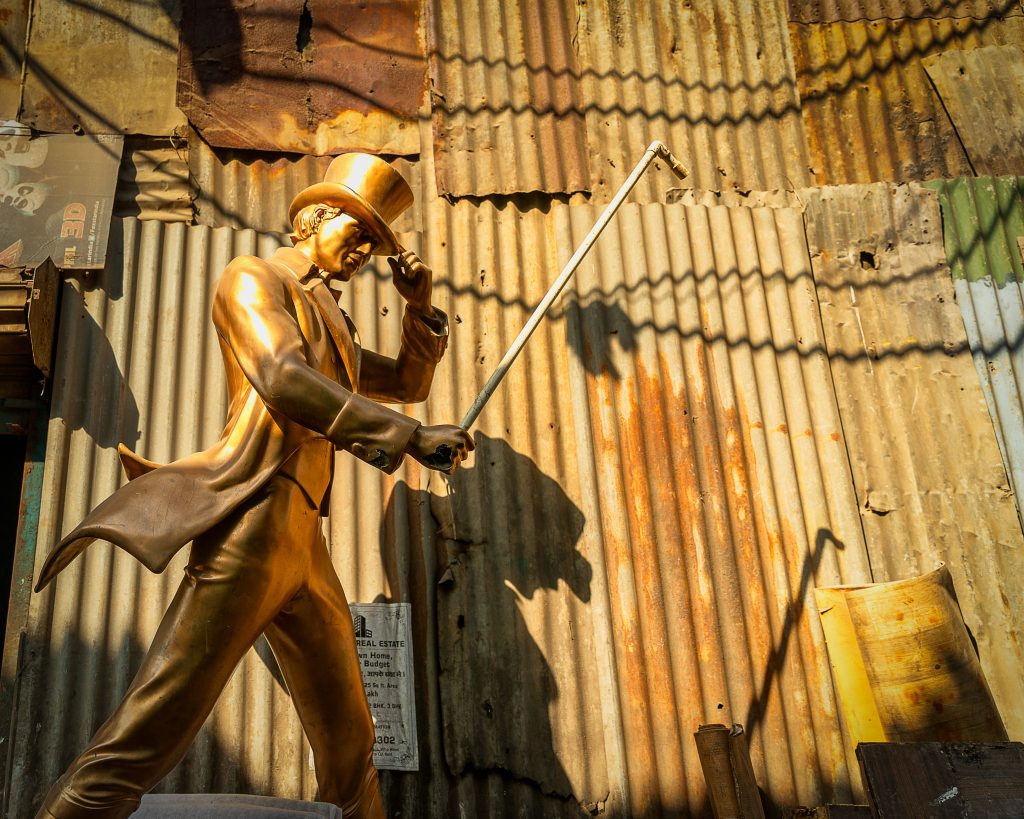 Between this you have the bakers, ladies sell live fish jumping out of their bowls, the tanners, the wood-carvers, all of whom supply the hotels, markets and souvenirs you find all over the world. All coming from here.
Between this you have the bakers, ladies sell live fish jumping out of their bowls, the tanners, the wood-carvers, all of whom supply the hotels, markets and souvenirs you find all over the world. All coming from here.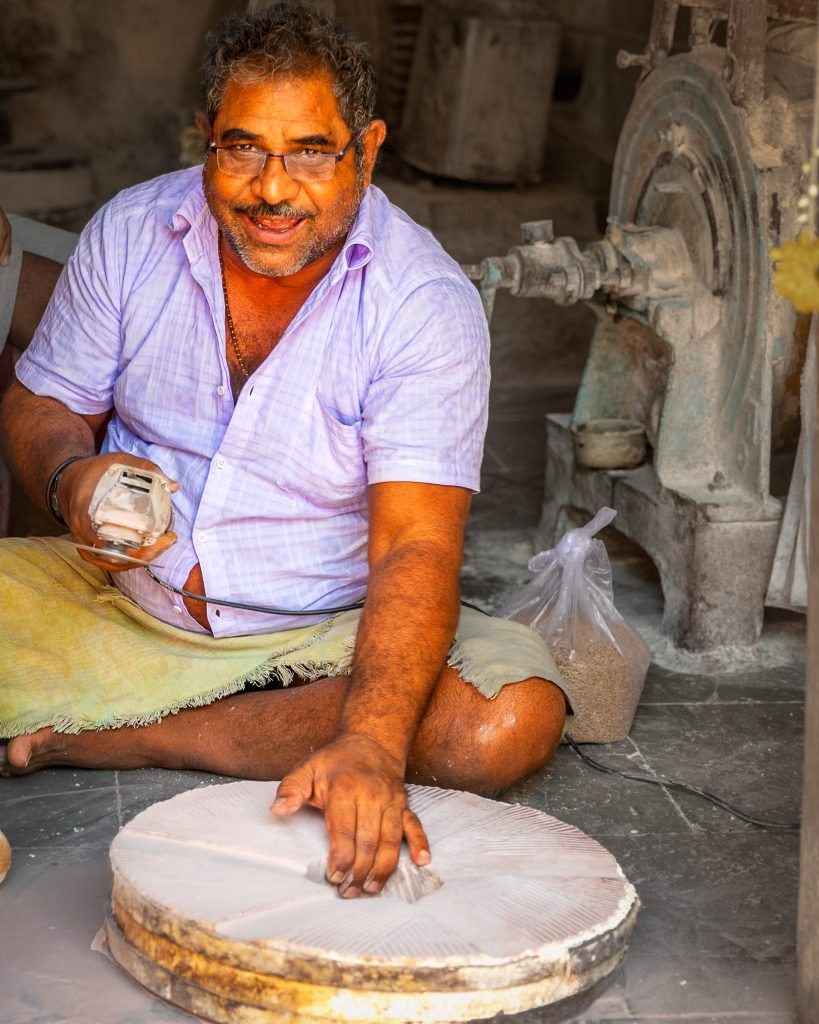
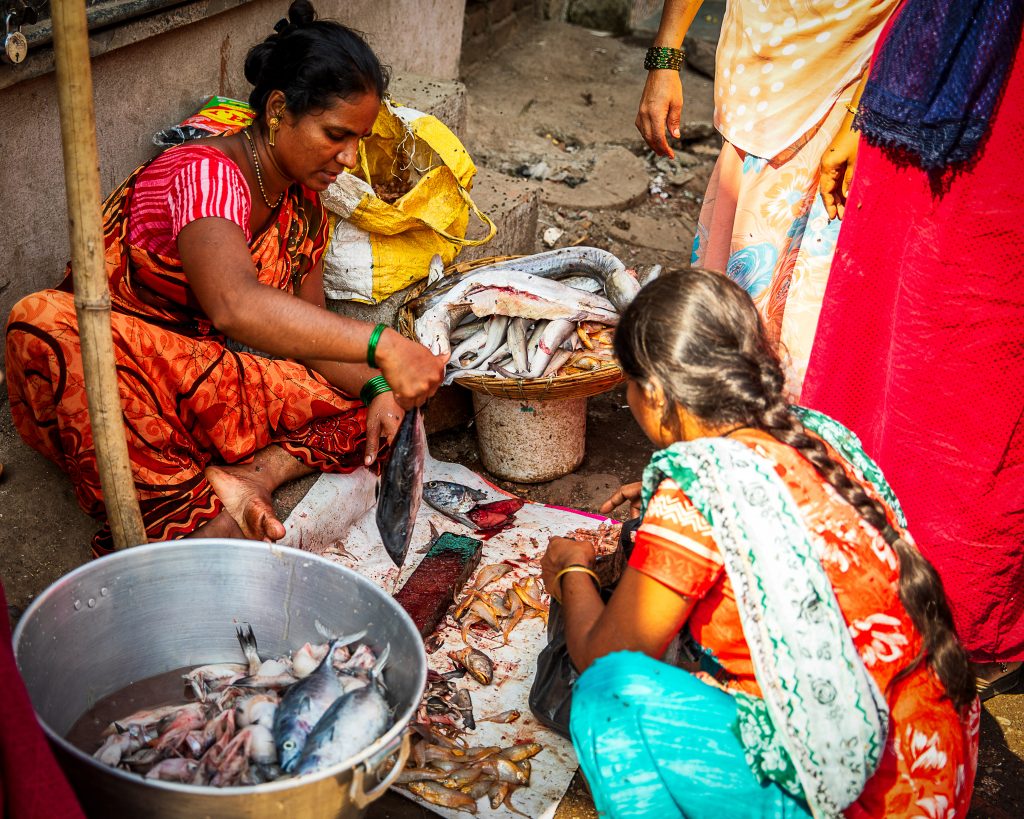
Of course, I admired their entrepreneurial nature. They have made this happen, and that’s commendable, but no, I could not consider we should celebrate these appalling conditions. I could not understand that they could be happy to settle for this.
What is happiness?
I wondered if our guide was misinterpreting hard-working determination to survive with happiness. I spent a couple of hours there and left with a nosebleed and a blinding headache. The guide makes more money in hourly tips than the people of Dharavi will earn in a year. Don’t presume to tell me “look at how happy they all are!” Or was it actually me who was being judgmental? Hmm anyway, the guide then us led to the leather goods factory.
Gucci, Gregg’s, it’s all the same to me.
This is in a semi-decent building. It has a door and two large windows, so they can watch you coming! This is where you get the hard sell – buy our handbags, buy our leather coats, we supply to Gucci. Here you get for a lower price. I’m not a fashionista, I don’t know my Gucci from my Gregg’s, but they looked designer and, having talked around and researched a bit later, it seems they do indeed supply to Gucci and other such big brands.
Who really pays for the price of fashion?
All I can say to that is shame on you Gucci (or whoever). This is not as I read in one of your articles, ‘sustainable fashion’ and ‘looking after our suppliers’. You gave them a door and a lightbulb, yes, which is more than the other factories have. Meanwhile, outside, the animals supplying your leather are tied up shitting on the doorstep, blood running down the makeshift streets from the fresh skinned creatures, who stand side by side the said animal skins drying in the sun.
And you want me to pay you how much for your fancy bag? Sustainable for yourselves, not for the humans or animals involved. I digress. Allegedly, of course. I am just saying what I saw. I didn’t see any bags marked Gucci, or any such thing. They remained blank, waiting to be labelled. Just saying jus’ sayin’. Anyway, we declined their generous offer to buy their bags and coats and moved on to the living area.
Life in the Dharavi Mumbai slum
This is perhaps how I imagined Dharavi would be. And, is the image Slumdog Millionaire portrays. If you haven’t seen the film, watch! It is, in fact, a love story, good over evil, triumph over adversity that kind of thing and, I reflected, summed the place up well.
The living area is vast, dark and narrow. A thin curtain designates the front of the house, rather than an actual door. I wondered about the crime. The guide told us – no crime here. Really? Take any population of 1 million people and tell me there are no criminals. Crime is part of society and here was a society. There must be crime.
Stacks of individuals live in shacks above and below, side to side. You need to turn sideways and duck your head to pass through the alleyways. Cooking pots and gas burners sit outside the curtains for some families. There must be fires; there must be. Children crawled around in the sewers, and bodies seemed to flick back and forth like ghosts in the darkness.
When we walked through, it was water time; when water appears gushing through the ‘roads’ bursting out of pipes. People ran out to wash, to clean their clothes, to gather water for drinking and cooking and then it stops. Leaving behind a sludgy, slippery mess.
At one point walking through I sensed something wet sprinkle on to my arm, only to hear Iain shout behind me “I think piss just dropped on to my face”. Ahhhh, crap.
(Iain did not take photographs in the living area!)
The Dharavi Mumbai slum paradox
So why a paradox? Until Slumdog Millionaire, Dharavi indeed used to be a slum, established, hold your head and sigh… by the British in 1882. A growing community of poverty, disease, and raw sewage running throughout the area. Poor, hungry, abandoned people. Viewed as the lowest in society, put on the then mangrove island, out of mind and out of sight, to do the work no one else wanted. Mumbai then expanded around Dharavi – hence, the two now lie side-by-side today. But slum portrays the idea of helplessness, of forgotten people on the outskirts of society. The residents of Dharavi are certainly not the forgotten and outcast.
The Slumdog Millionaire effect
Following the movie, tourists came to discover for themselves. Who were these forgotten people? The Government became a tad embarrassed. Sightseers were coming to witness this blot on the Mumbai landscape, so they invested, encouraging individuals to make a better living for themselves, to make something out of the shit they lived in.
A new industry
Consequently, an ‘industrial’ area of their own took shape. They made enough money to at least feed themselves. The sewers were, kind of, dealt with by the Government, and the next generation perceived they might make something for themselves by living here. So as more people moved in, Dharavi developed into a place families wanted to move in to. Next came schools and hospitals; Dharavi became a city within a city.
Hooray for Hollywood…
The ‘slum tours’ grew in popularity. But now the Slumdog Millionaire of the movie was not the place people came to visit. The film transformed their way of living. Hmm, the power of Hollywood. If only they just sprinkled a fraction of their millions to help the communities out in the first place.
The times they are a-changing. Dharavi Mumbai slum or citysystem?
So today on the outskirts of Dharavi, you can witness proper regeneration. Here is where I began to appreciate the notion that this was indeed a citysystem. A city within a city. Actual streets, actual shops, markets with fresh fruit and vegetables and – a generation of people eager to have their photos taken. Because slum or not, they recognise the power of the Social Media, Instagram crowd. There is money in tourism.
People are choosing to live in Dharavi, and they are educating themselves. They are becoming concierge in top Mumbai hotels, drivers, teachers. But are they poor? Is this still poverty? What is poverty?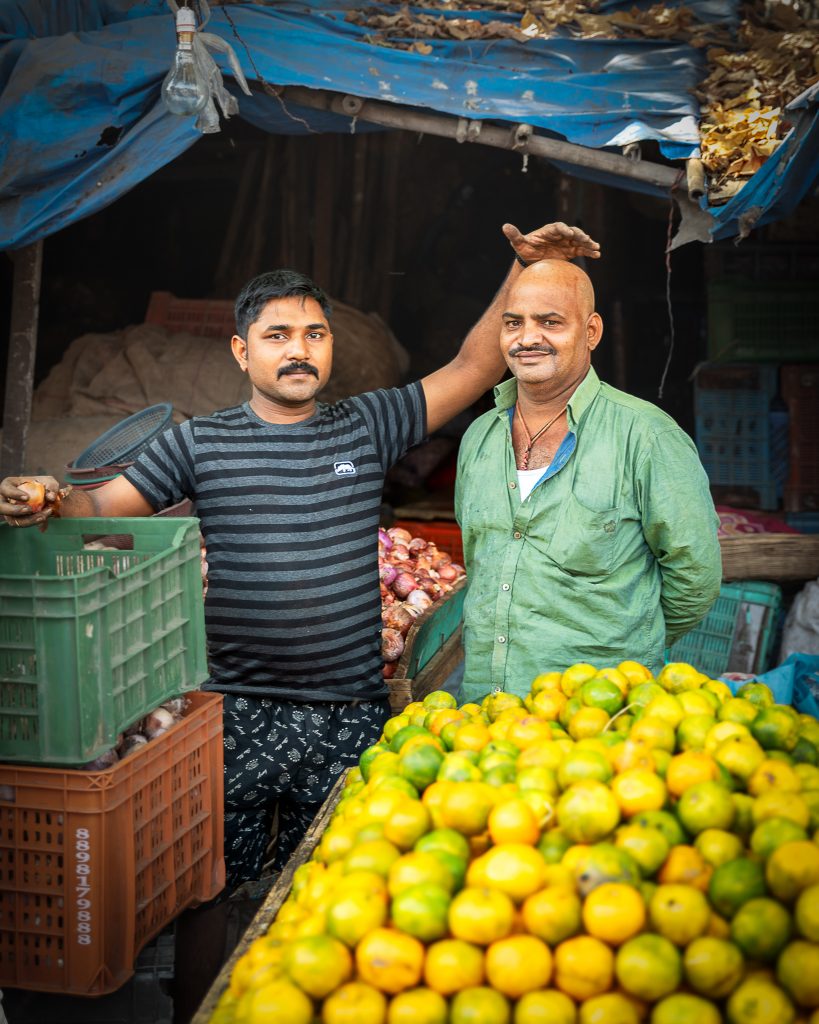
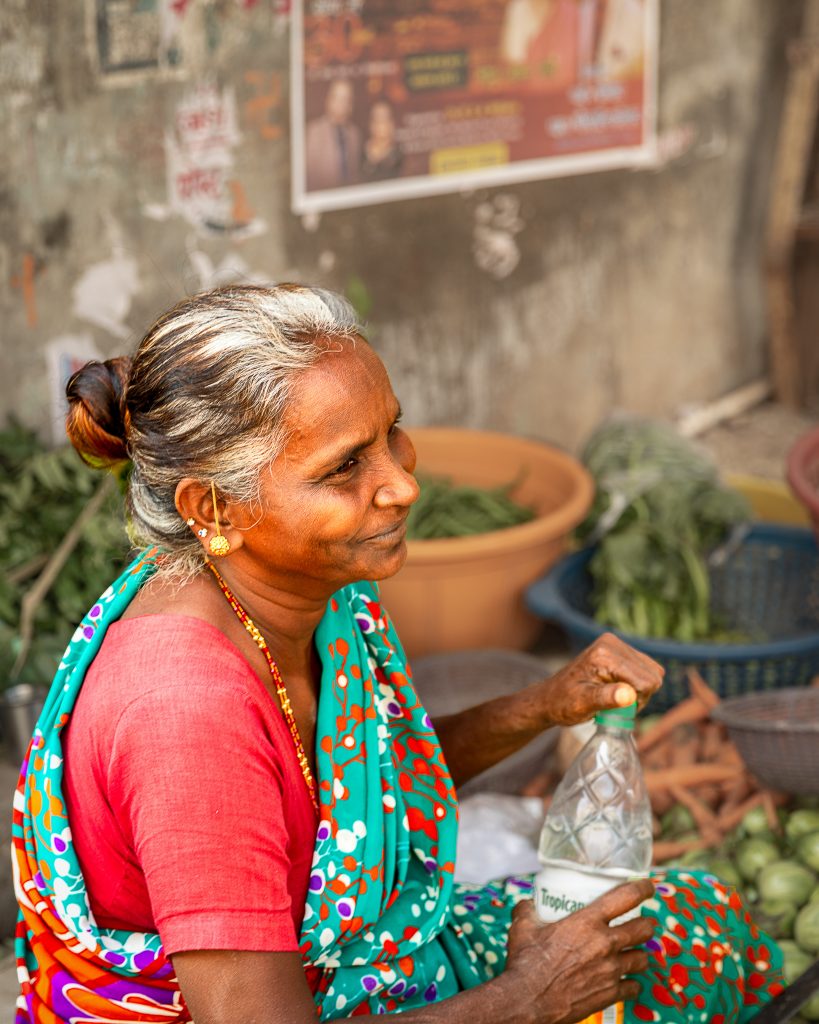
We encountered many people curious about what we were doing, but no one threw stones. Most did indeed appear happy and were just getting about their day. Would I pay another well-to-do tour guide to stumble through their livelihoods and homes? No. Would I recommend you go? Perhaps. I have since discovered other tours carried out by residents of Dharavi and certainly I think this would be more informative. In hindsight, it would have been better to have actually talked to residents themselves.
Dharavi Mumbai slum lessons learned
The Guide:
The guide admitted at the end of the tour she was so dumfounded at finding the concierge she questioned her beliefs. Her encounter with the slum dog in disguise had completely thrown her. While she had recognised the old ‘slum’ notion was wrong, she had not realised how far change had come. But, good for her for being open-minded about making that change for herself. She explained, as a Muslim woman from her community, she has to use ‘a powerful voice’. She is opinionated and firm to have her voice recognised but also, she added thoughtfully, she realised she should listen more too. I admired her for that.
The Husband:
Iain was quick to put his camera away throughout the living areas, acknowledging this would indeed be an intrusion. He was respectful, asking to take photographs of people, who all agreed; people even asked him to take their picture. You can read his blog about this here Photographing People-Travel Photography Tips. In conclusion, he conceded, yelling at your tour guide was not a healthy way of negotiation. Progress, progress.
And Me:
I’m still learning. It’s all learning. I learned not everything will give you the answers you think you are going to find. Sometimes you leave with more questions than you started with. And sometimes things just – are.
For more lessons learned on our travels read my previous post, 8 Lessons learned from old Namibia.There could be a theme developing here!


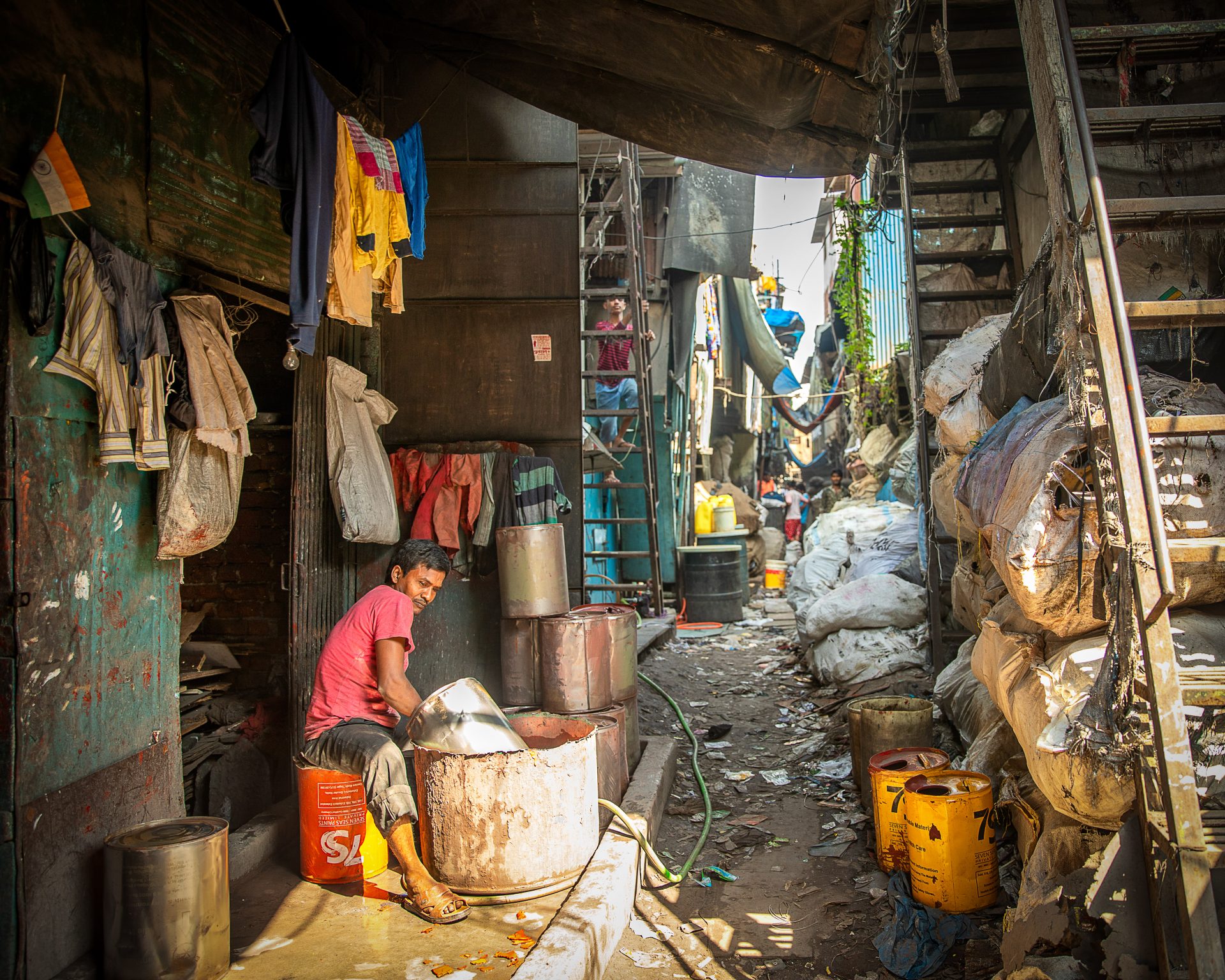
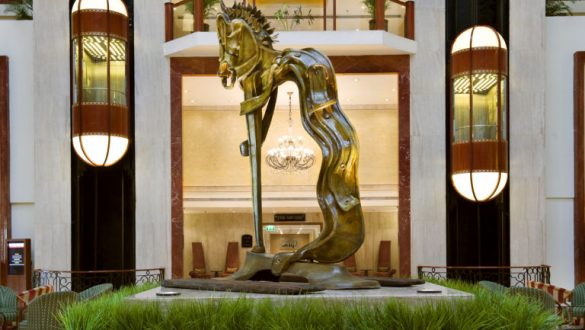
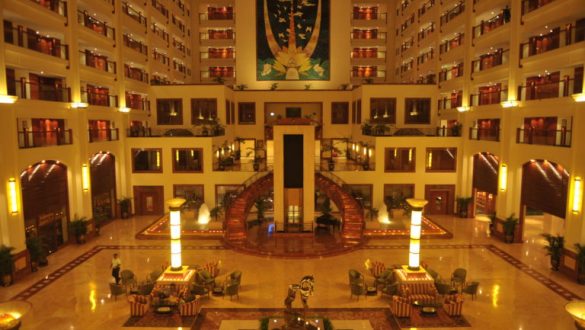



Great read Kat
Thanks Susan glad you found it interesting!
[…] their lens to another part of their body. I experienced this in photographing people in Mumbai (Dharavi Mumbai visit: the Slumdog Millionaire paradox). I had to be mindful when visiting the living areas and put my camera away. If you don’t […]
It’s interesting when faced with what we precieve to be abject poverty that we also find contentment and a drive to survive. Poverty is more than the definition. I find the whole concept fascinating. You seem to have found a community that were rich in resilience. Is it to do with expectations and mindset? Why is the poverty gap in Scotland growing when so much is being done to try and close it….
I agree Irene. I really question what the definition of poverty actually is. Just outside the Dharavi area there were people who appeared to have even less, now they definitely looked poor – as in had nothing and no way out of it. I asked if they were homeless but the guide didn’t want to address it. It all left me with more questions than answers!